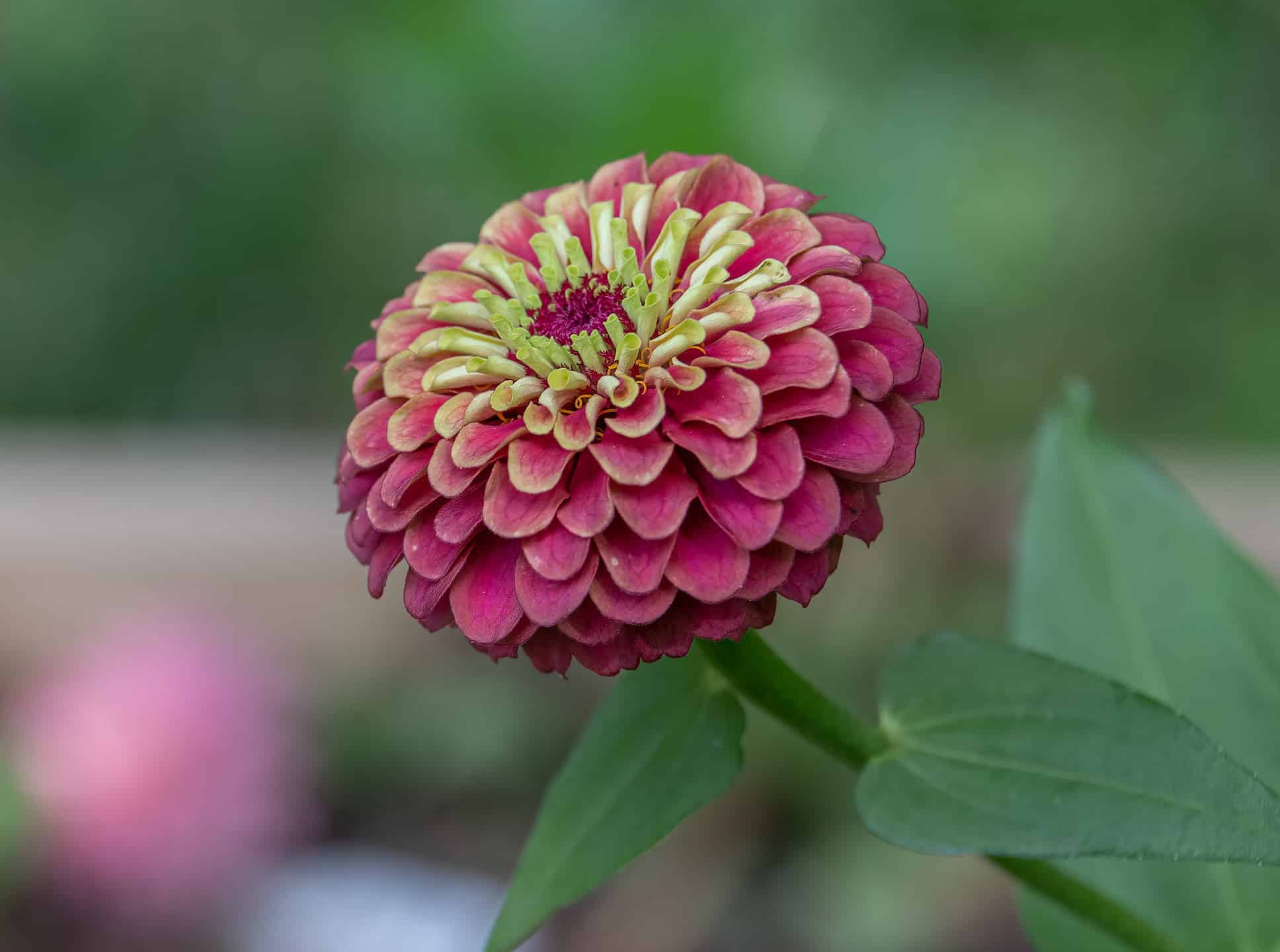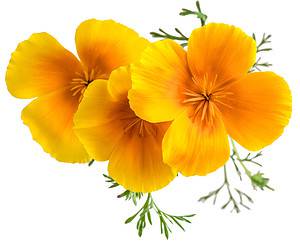Common flowers that start with the letter Q include Quaker Ladies, Queen Anne’s Lace, Queen’s Cup, Queen of the Meadow, Queen of the Prairie, Queen’s Wreath, Queen Red Lime, Queen’s Tears, Quaker’s Bonnet, Quaking Grass, Queen Lily Ginger, Queen of the Night, Queen’s Crown, Quehla Chin Cactus, and Quamash. Read on to learn more about these amazing flowers!
Let’s explore a blooming celebration of nature’s elegance with all of the gorgeous flowers that start with Q. Each of these beautiful flowers carries a unique charm, exhibiting a variety of colors, shapes, and textures. Although Q might not be the most common starting letter for flower names, the floral species we’ve lined up are nothing short of extraordinary. So, get ready to enrich your garden and your knowledge as we dive into stunning flowers that start with the quaint and queenly letter Q.

1. Quaker Ladies (Houstonia caerulea)
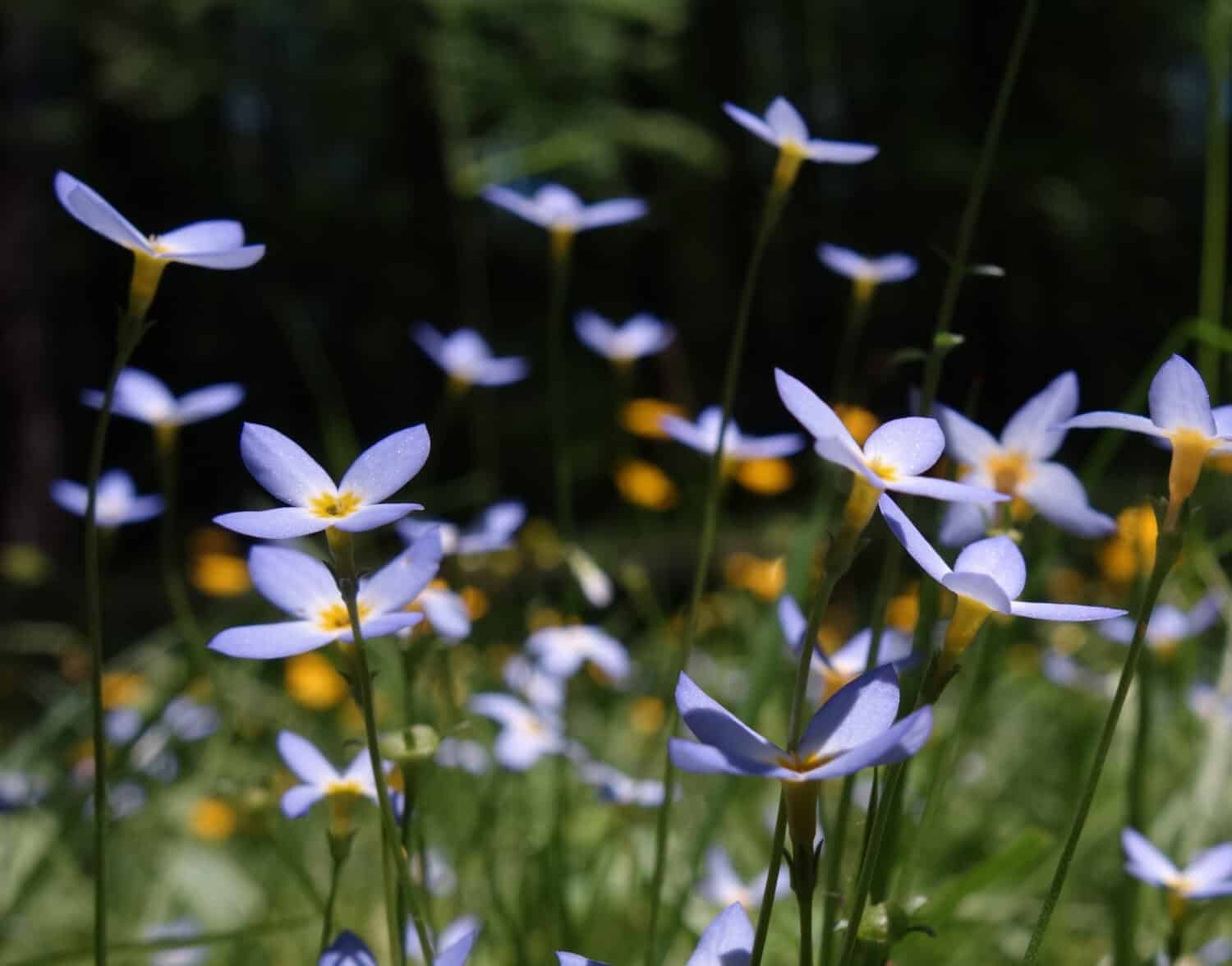
Quaker ladies have beautiful blue petals.
©Lisa Holder/Shutterstock.com
The sight of countless small, intricate blooms of Quaker ladies is a marvel to behold as spring sets in. Their gentle blue petals, encircling a golden-yellow center, rise from thick gatherings of leaves carried by thin stalks that reach a height of just 3 to 6 inches. This plant undergoes a flowering phase that typically lasts around three weeks in the late spring. When cultivating this plant from seeds, you can expect to see seedlings sprout in the first year and blossom in the second.
Its natural habitat spans from the eastern part of Canada all the way to the southeastern region of the United States, reaching as far south as Louisiana.
2. Queen Anne’s Lace (Daucus carota)
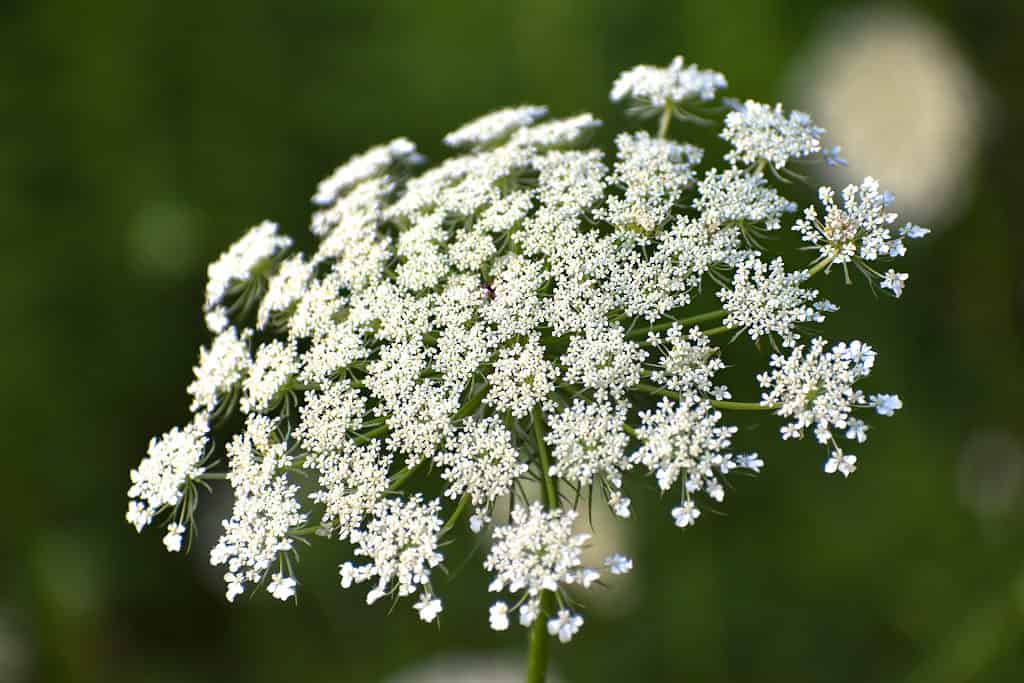
A flower that starts with Q is Queen Anne’s lace, a composite flower.
©Antho B/Shutterstock.com
The “flower” of Queen Anne’s lace is, in fact, a composite flower, boasting thousands of tiny white blossoms that form lacy, flat clusters with a deep purple center. As the seeds mature, the flower cluster transforms inward into a shape reminiscent of a bird’s nest and adopts a brown color.
This plant is a common sight in open fields and along roadsides. The variable biennial Queen Anne’s lace, also known as Daucus carota, typically grows to a height of about 3 feet and blooms from June through August.
Its roots trace back to Afghanistan and nearby regions, from where it expanded to the Mediterranean parts of Europe before the advent of Christianity. The plant was supposedly brought to North America due to its medicinal properties.
3. Queen’s Cup (Clintonia uniflora)
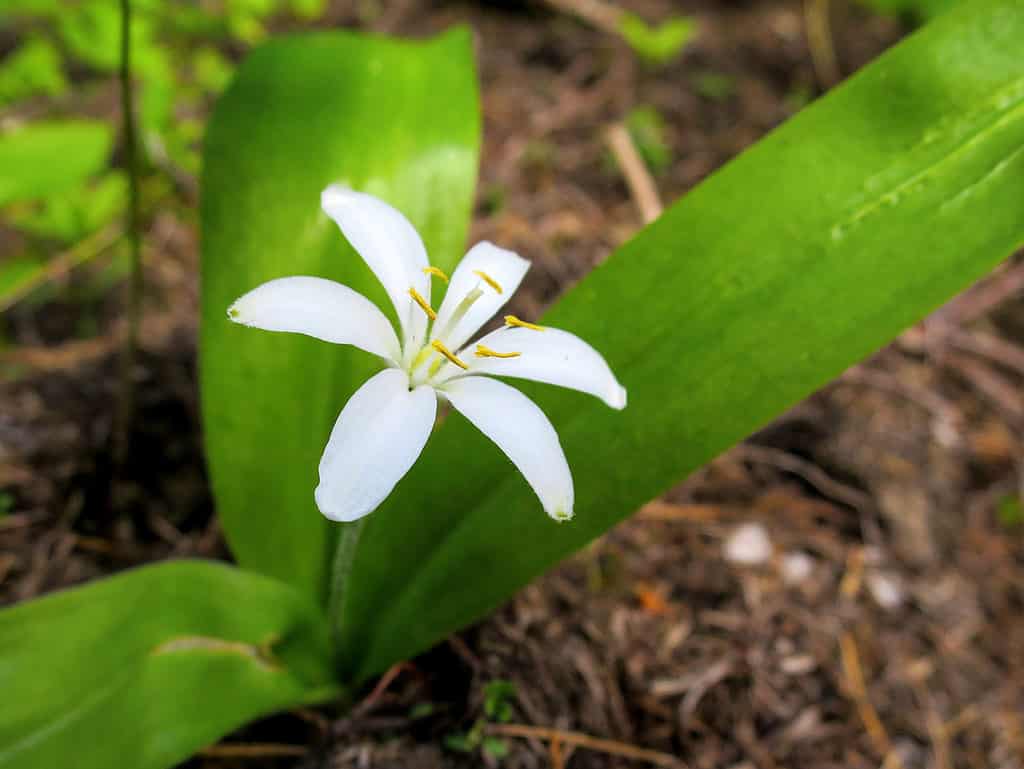
Queen’s cup has a pure white flower measuring about an inch long.
©iStock.com/randimal
The blossom of the queen’s cup, with its pure white color, measures around an inch in diameter and crowns a thin stem that stands between 3 to 8 inches high. The base leaves, shaped like a lance, outstretch the flower stalk in length.
This perennial plant, categorized as a geophyte, has a lifespan that can exceed 30 years. Its flowering season spans from late May to July, following which the fruit ripens from the end of July to September.
Belonging to the lily family, this flowering species carries several other names, such as the bride’s bonnet. This particular member of the bead lily genus originates from the mountainous regions of western North America, stretching from California to Alberta.
4. Queen of the Meadow (Filipendula ulmaria)
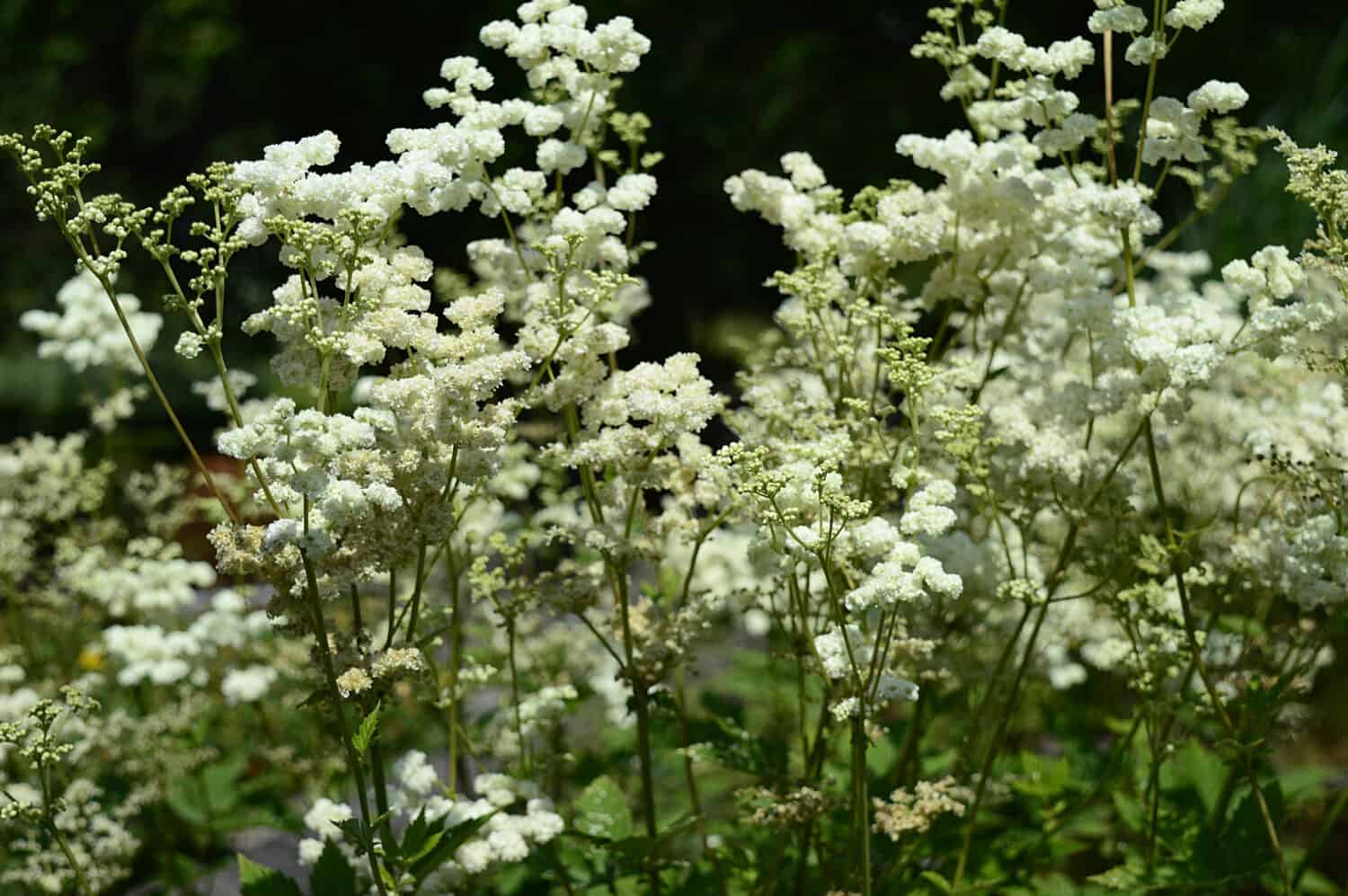
With white aromatic blossoms, the queen of the meadow blooms in early summer.
©agatchen/Shutterstock.com
The queen of the meadow boasts prominent and aromatic blossoms. It has branching clusters of tiny, white to cream-colored flowers that stand upright. Moreover, each individual flower features five petals and countless stamens, lending the flowers a “fluffy” look. The fruit and seeds are also unique, taking on a spherical shape and displaying an irregular, spiraling pattern. These creamy-white blossoms usually start making their appearance in early summer, gracing the plant till the onset of late fall.
This flower traces its origins back to Western Asia and Europe. In the United States, the queen of the meadow has found use in alternative medicine, with the roots holding the highest importance.
5. Queen of the Prairie (Filipendula rubra)
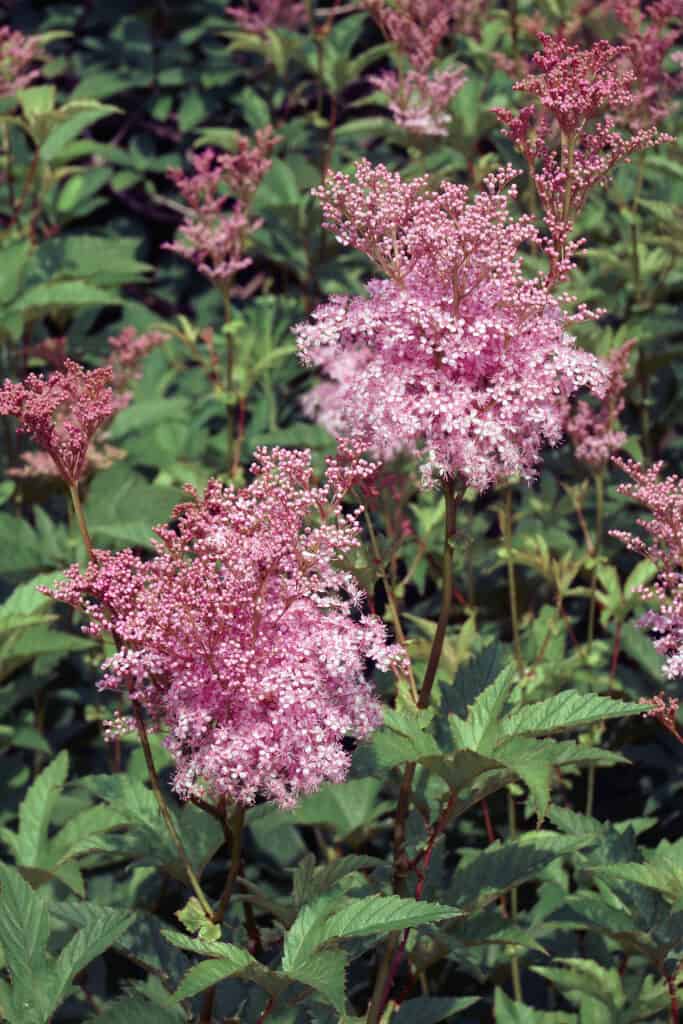
Known for its aromatic pink blossoms, the queen of the prairie is a beautiful plant.
©iStock.com/nickkurzenko
The queen of the prairie is known for its grand clusters of tiny, aromatic, typically pink blossoms. The flowers have an array of stamens that give them a soft, fuzzy look. This striking herbaceous perennial with coarse leaves thrives in wildflower gardens.
The queen of the prairie blooms from early to late summer, with the flowering phase lasting about three weeks. Following this period, straight, reddish fruits appear that measure around a quarter to half an inch across.
Originally from the northeastern and central US and southeastern Canada, this plant can be found in moist meadows and prairies stretching from Pennsylvania to Minnesota.
6. Queen’s Wreath (Antigonon leptopus)
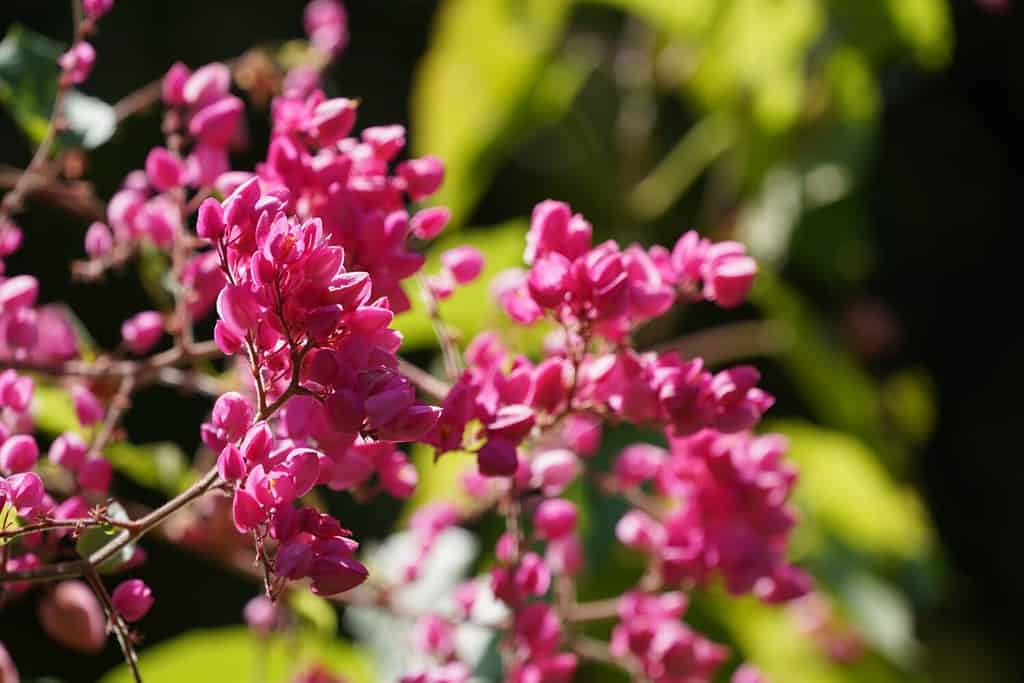
Blooming multiple times a year, the queen’s wreath’s blossoms look like clusters of grapes.
©Doikanoy/Shutterstock.com
The queen’s wreath bursts into bloom multiple times throughout the year, with the most prolific flowering taking place from February to June. The blossoms are tightly arranged in a formation known as a raceme that, from afar, looks similar to a cluster of grapes. Furthermore, these tiny flowers sport light blue or purplish hues. As they mature and drop off, they leave behind the calyces. This vine flowers abundantly, drawing the attention of butterflies, bees, and hummingbirds.
Commonly referred to as the purple wreath, it originates from the West Indies and stretches from Mexico to Paraguay.
7. Queen Red Lime (Zinnia elegans)
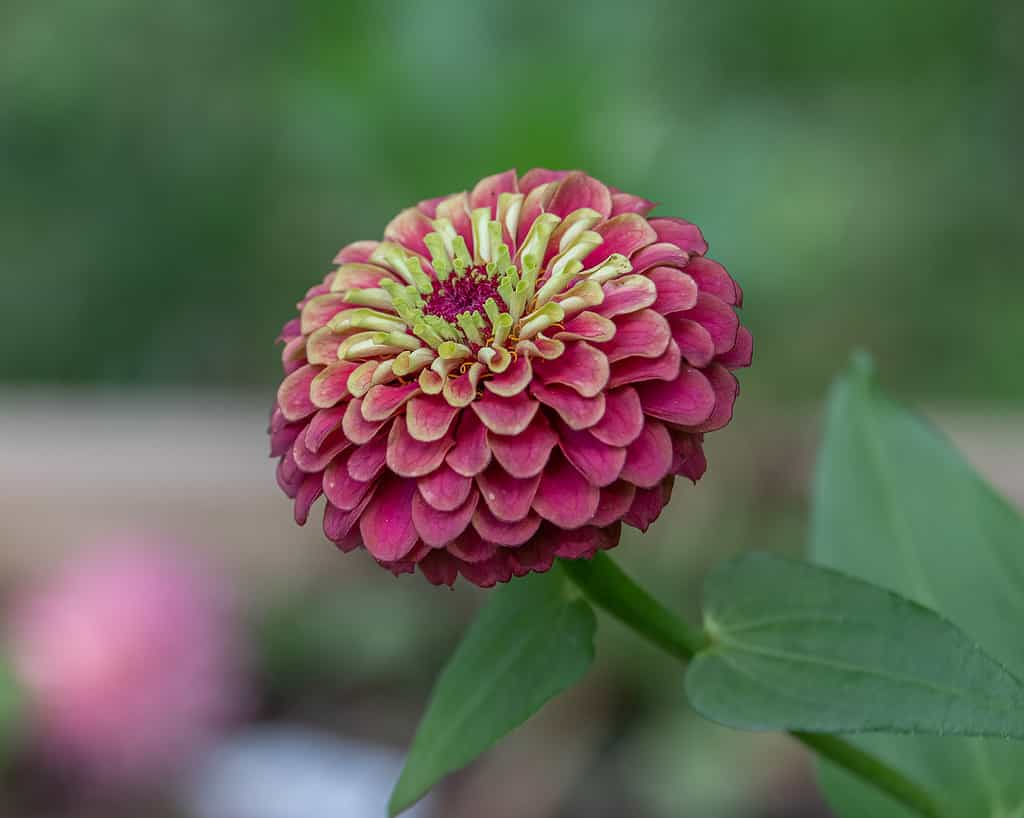
One of the most beautiful flowers that starts with Q is the queen red lime.
©Joshua Goddard/iStock via Getty Images
The queen red lime is a striking zinnia that oozes a vintage charm. Its dual-toned blossoms, as wide as three or four inches, display the hue of an aged rose silk that transitions to a subdued lime green towards the upper part of the bloom. Here, the curled petals encircle a deep rose core. The plant stands three feet tall.
This zinnia variety delivers a season-long display of flowers, usually from summer well into the fall months. It’s a magnet for pollinators like hummingbirds, butterflies, and various bee species. Given its extended blooming period, it’s an environmentally beneficial flower to cultivate.
This annual bloomer traces its origins back to Mexico.
8. Queen’s Tears (Billbergia nutans)
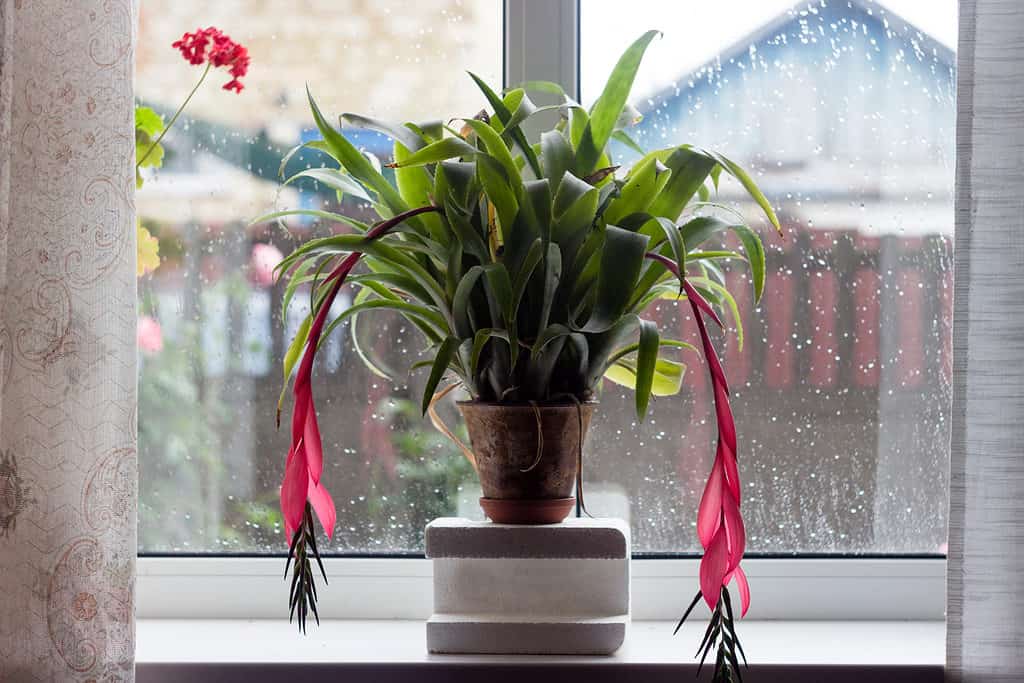
A bromeliad, the queen’s tears flower has beautiful pink stalks with flower droplets in various colors.
©Nikilev/Shutterstock.com
Queen’s tears is a type of bromeliad that shares lineage with the pineapple family. Its pink stalks are adorned with clusters of flower droplets in hues of pink, blue, and green, giving it an appealing, delicate aesthetic unique to this plant type.
Typically, this plant comes into bloom during March and April, with the flowers remaining vibrant for a span of 6 to 8 weeks. It’s often referred to as the “friendship plant” due to its tendency to produce numerous offshoots, or young plants, which can be shared with friends.
The queen’s tears is an epiphytic bromeliad originally found in Uruguay, Paraguay, Brazil, and Argentina.
9. Quaker’s Bonnet (Primula vulgaris)
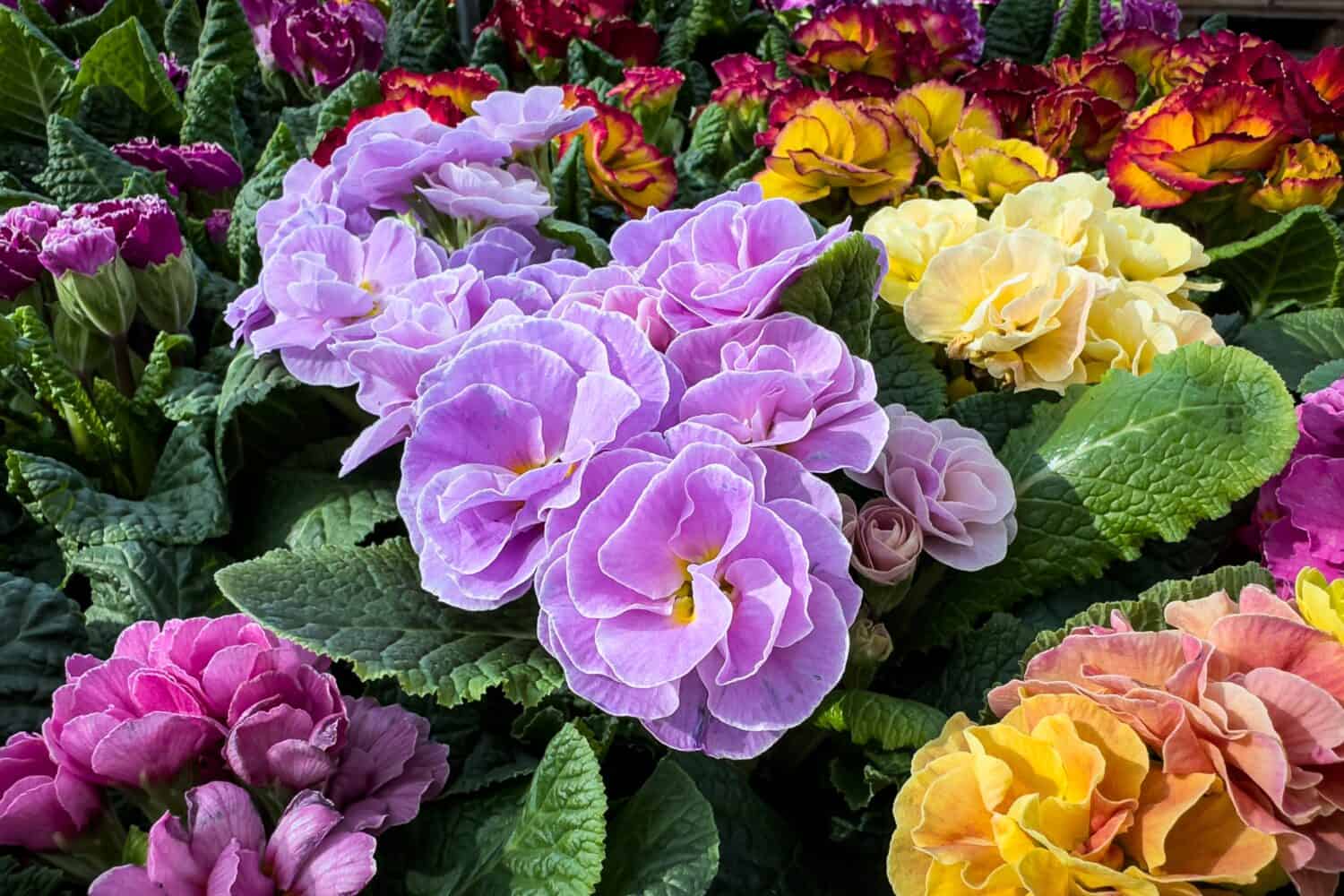
A beautiful flower that starts with Q, the Quaker’s Bonnet is a double primrose.
©nnattalli/Shutterstock.com
The Quaker’s Bonnet is a delightful little plant that serves as a gem in the garden. It adds a pop of color and a point of interest from the end of winter, stretching through spring and summer. This particular primrose is recognized for its numerous, fully double, subtly fragrant, light purple flowers that bloom above green leaves.
The flower traces its roots back to Europe and Western Turkey.
10. Quaking Grass (Briza media)
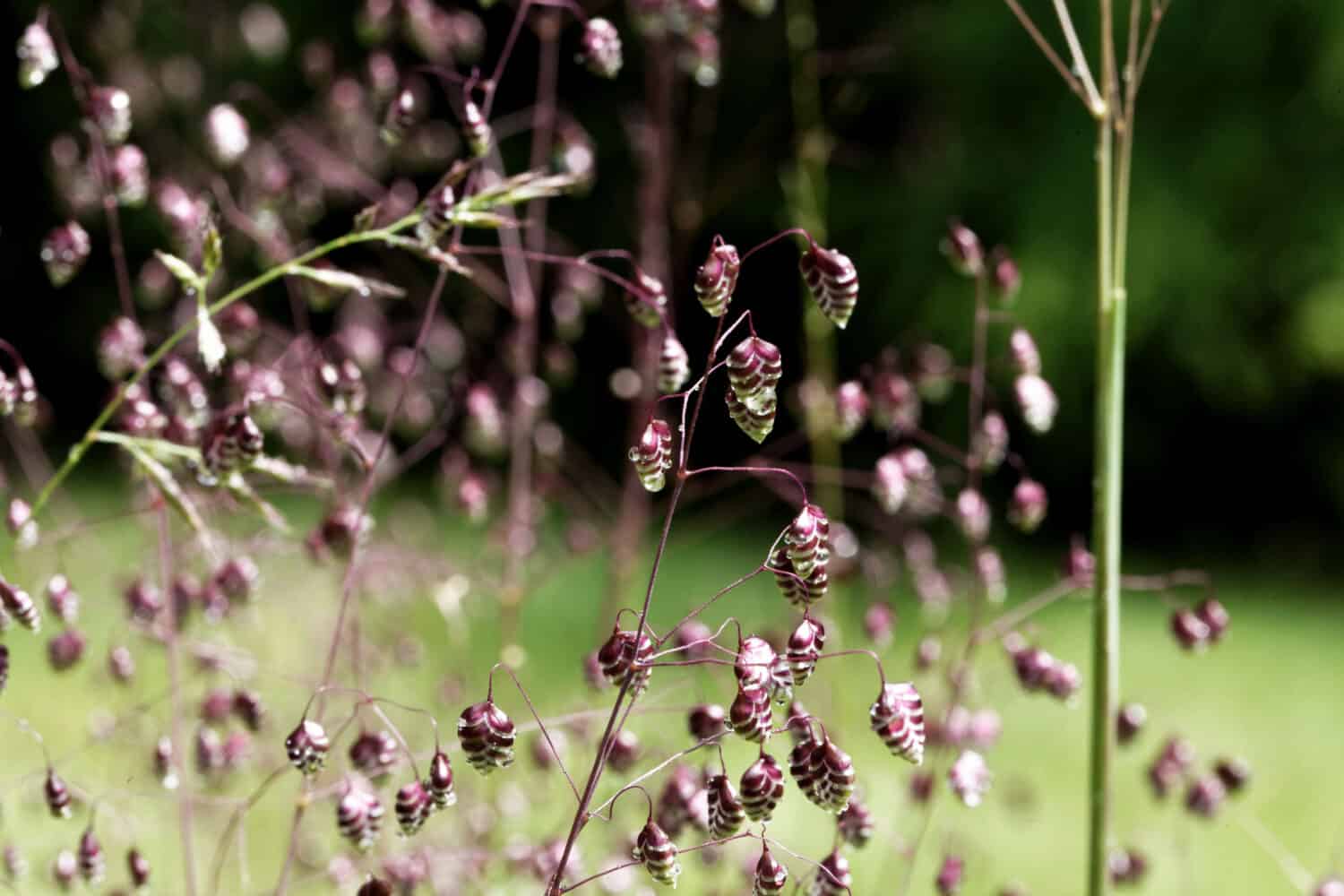
Named due to the flower spikes trembling in the wind, quaking grass blooms from May to September.
©ChWeiss/Shutterstock.com
Quaking grass is a charming grass species that grows between 6 to 15 inches in height, forming loose clumps. The plant’s fragile flower stems branch out, bearing drooping flowering spikelets that tremble in the wind, leading to its common name. Its leaves are lightly coated with a waxy bloom and end in slim, blunt tips. The blooming season for this grass typically spans May to September.
Often referred to as little quaking grass, this flower is native to Europe, northern Africa, and western Asia. It has also been widely introduced in southern and western parts of North America.
11. Queen Lily Ginger (Curcuma petiolata)
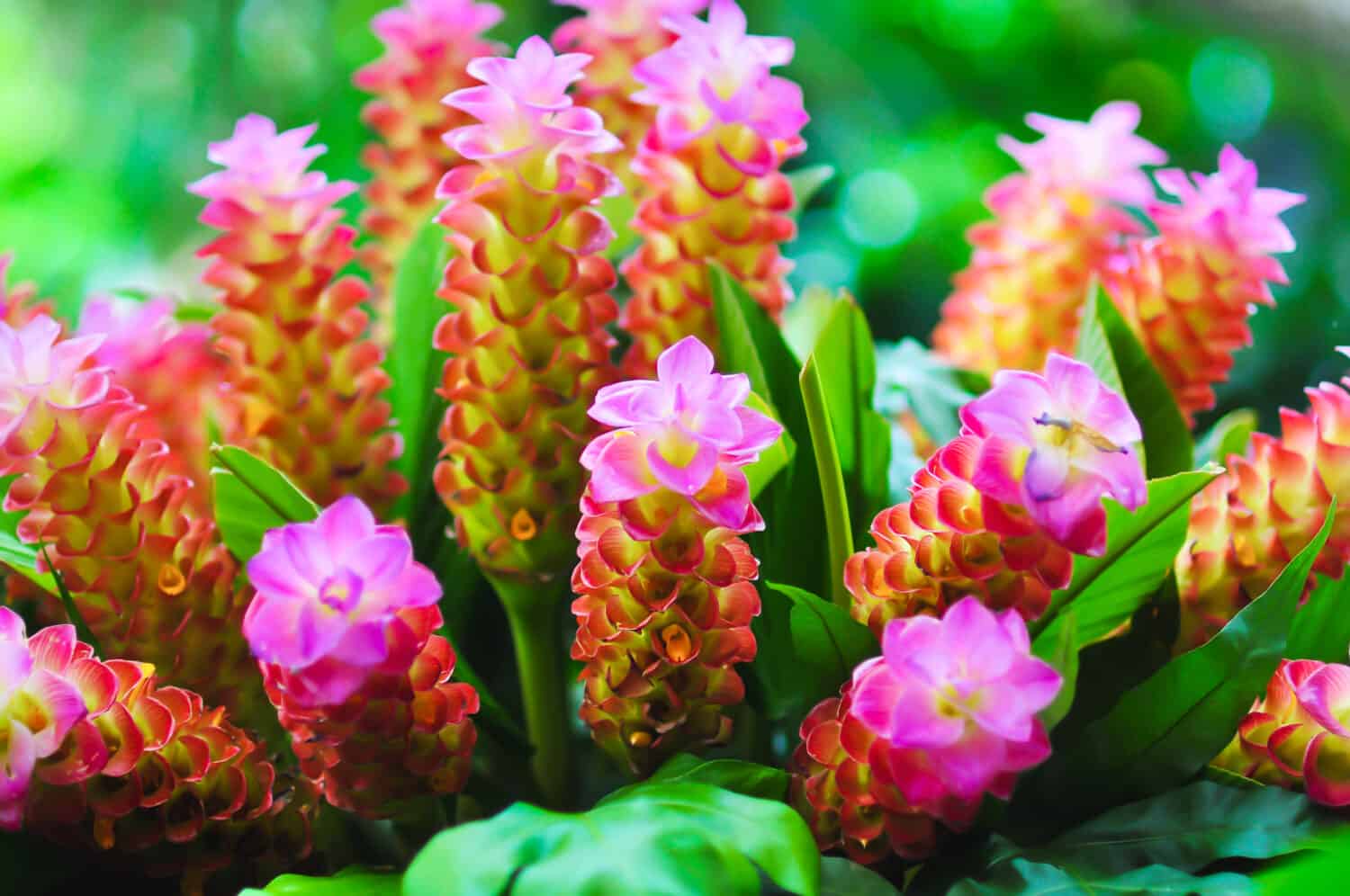
The queen lily ginger’s blooming period is from June to August.
©Pair Srinrat/Shutterstock.com
Isn’t it fascinating when a plant holds a surprise? Consider the queen lily ginger. Its vibrant blooms that captivate your gaze are actually not blooms at all! This plant is among many that utilize colorful bracts to draw attention to their tiny, often overlooked flowers. Nestled among the bracts, the small flowers may be out of sight, but they are equally charming and warrant appreciation. The queen lily ginger’s blooming period stretches from June to August.
Originating from Thailand and Malaysia, it has now become a popular choice for tropical and subtropical garden decorations.
12. Queen of the Night (Epiphyllum oxypetalum)
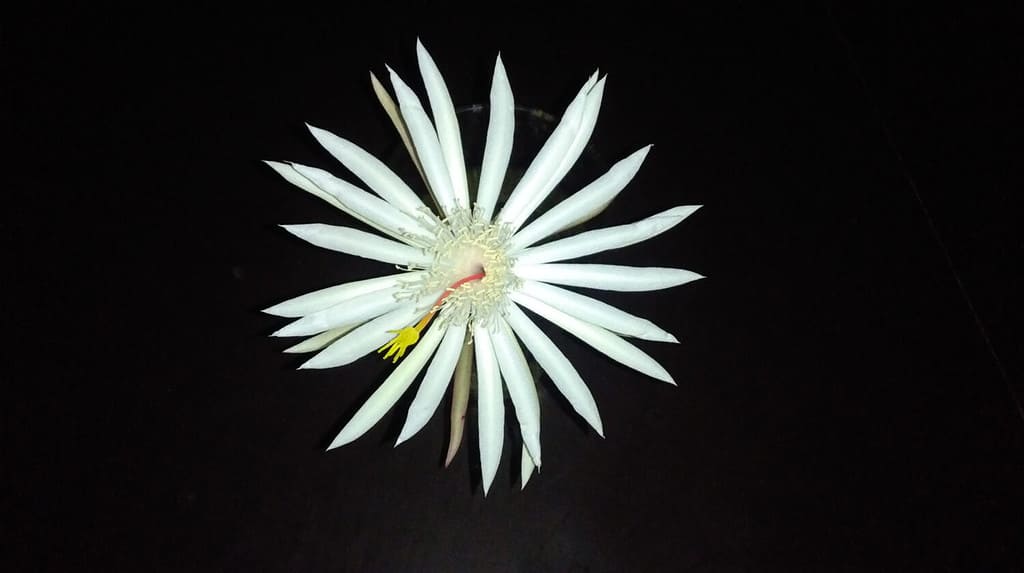
Blooming only at night just once a year, the queen of the night is a beautiful cactus flower.
©K.K.T Madhusanka/Shutterstock.com
The queen of the night is an intriguing cactus that only blooms at night. Surprisingly, It showcases its flowers just once a year, exclusively after sunset. This is quite an extraordinary display, as one might expect from plants that expend all their reproductive energy in a brief period. The blooms are large, aromatic, and glow white, reminiscent of a full moon. Unfortunately, predicting the appearance of queens of the night is tricky. While bloom night generally falls between mid-June and mid-July, it doesn’t get more specific than that.
Native to the desert regions of Texas, Arizona, and northern Mexico, The Queen of the Night is truly a desert marvel.
13. Queen’s Crown (Rhodiola rhodantha)

Boasting tubular pink petals, the queen’s crown is native to the Rocky Mountains.
©Danita Delimont/Shutterstock.com
The queen’s crown flower displays a cluster of petite, tubular pink petals organized in a round column, all supported by a short stem. This stem is adorned with several succulent leaves. The leaves undergo a transformation, adopting a red hue in the late summer or fall. This plant thrives in open meadows and wetlands, often found in abundance alongside streams.
This flower calls the Rocky Mountains home, flourishing at elevations of up to 8,900 feet above sea level.
14. Quehla Chin Cactus (Gymnocalycium quehlianum)
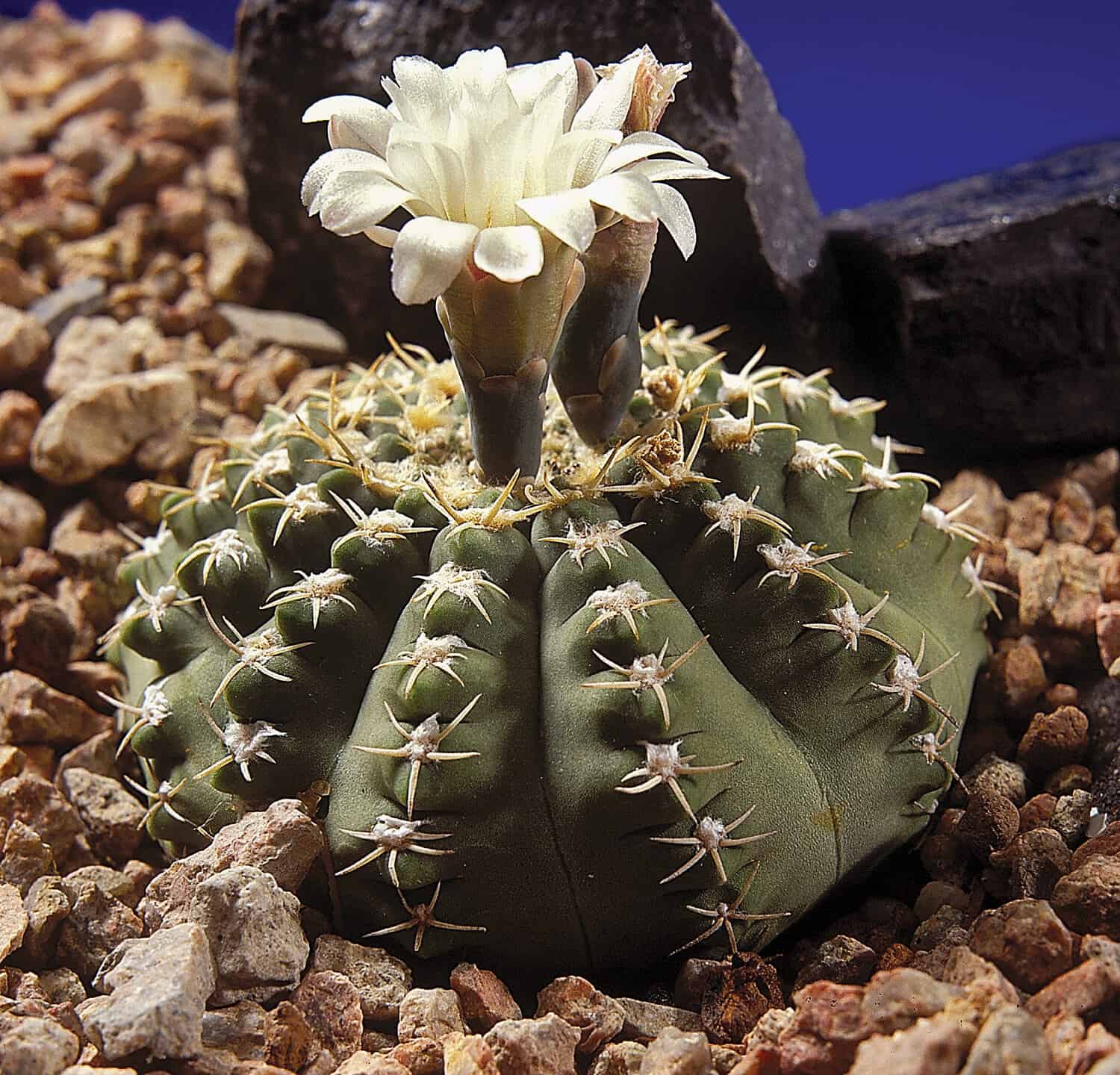
The Quehla chin cactus has white flowers.
©skifbook/Shutterstock.com
This particular cactus presents clustered, compact, ribbed, and tubercle-studded stems that exhibit a bronze hue when exposed to full sunlight. The flowers it bears are white and are shaped like a funnel, occasionally featuring a pink blush at its center. This cactus reveals its striking blooms in the early summer. Belonging to the Cactaceae family, this flowering species hails from northern Argentina.
15. Quamash (Camassia quamash)
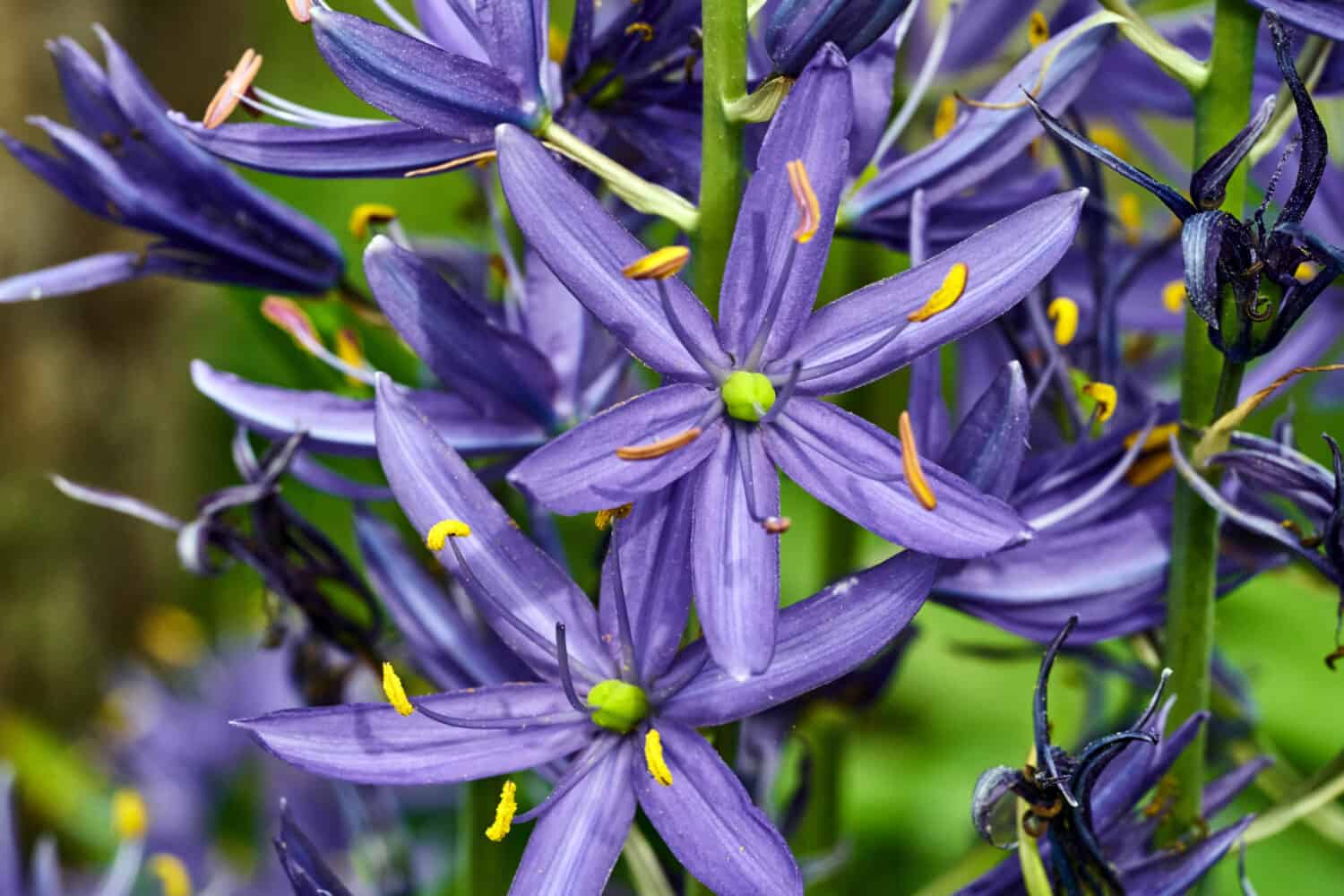
Known by many names, quamash blooms from May to June.
©Jonas Vegele/Shutterstock.com
The quamash is a perennial plant that grows in clusters featuring a bulbous base. It sports upright clusters brimming with dozens of star-like flowers, ranging from a sky-blue to a deeper blue hue, each about 3 inches wide. These beautiful blossoms are further embellished with six prominent tepals, a green hub, and vibrant yellow stamens. The quamash’s peak bloom period starts in early to mid-May and lasts until June.
Also known as small camas, common camas, or simply camas, this herbaceous plant originates from the vast regions of southern Canada and the northwestern United States.
Summary of 15 Flowers That Start with Q
| Number | Flower | Botanical Name |
|---|---|---|
| 1 | Quaker Ladies | Houstonia caerulea |
| 2 | Queen Anne’s Lace | Daucus carota |
| 3 | Queen’s Cup | Clintonia uniflora |
| 4 | Queen Of The Meadow | Filipendula ulmaria |
| 5 | Queen of the Prairie | Filipendula rubra |
| 6 | Queen’s Wreath | Antigonon leptopus |
| 7 | Queen Red Lime | Zinnia elegans |
| 8 | Queen’s Tears | Billbergia nutans |
| 9 | Quaker’s Bonnet | Primula vulgaris |
| 10 | Quaking Grass | Briza media |
| 11 | Queen Lily Ginger | Curcuma petiolata |
| 12 | Queen Of The Night | Epiphyllum oxypetalum |
| 13 | Queen’s Crown | Rhodiola rhodantha |
| 14 | Quehla Chin Cactus | Gymnocalycium quehlianum |
| 15 | Quamash | Camassia quamash |
Thank you for reading! Have some feedback for us? Contact the AZ Animals editorial team.

